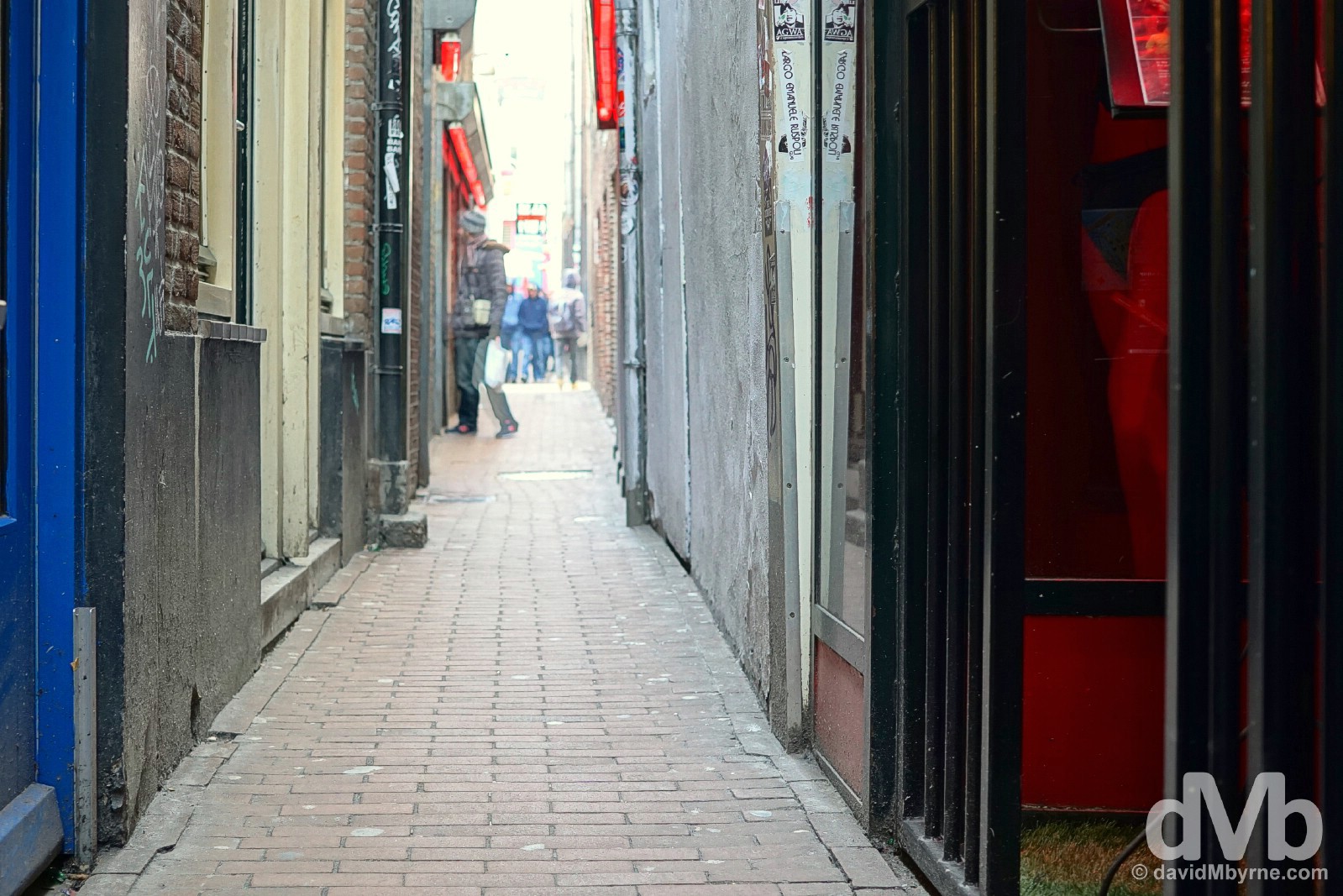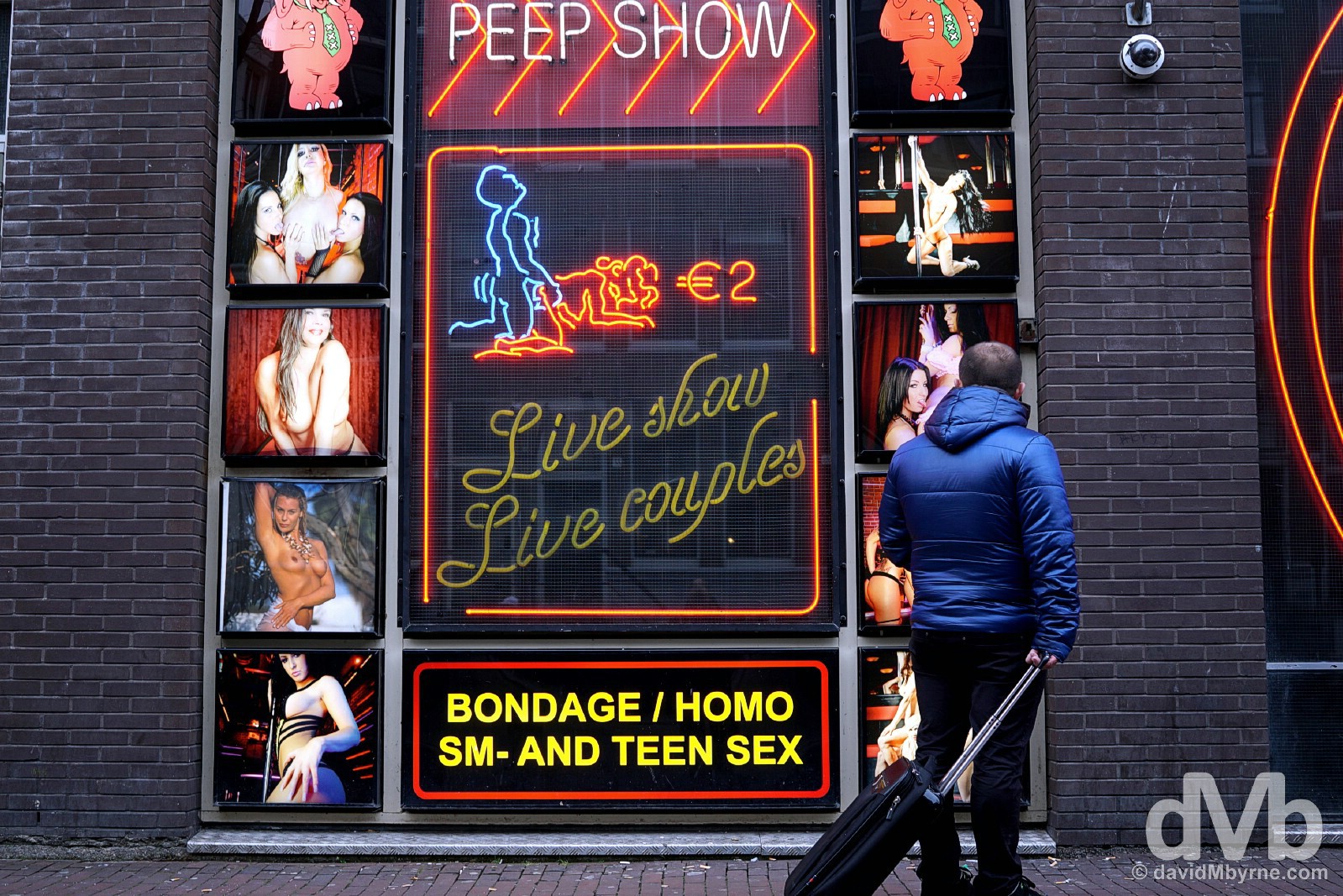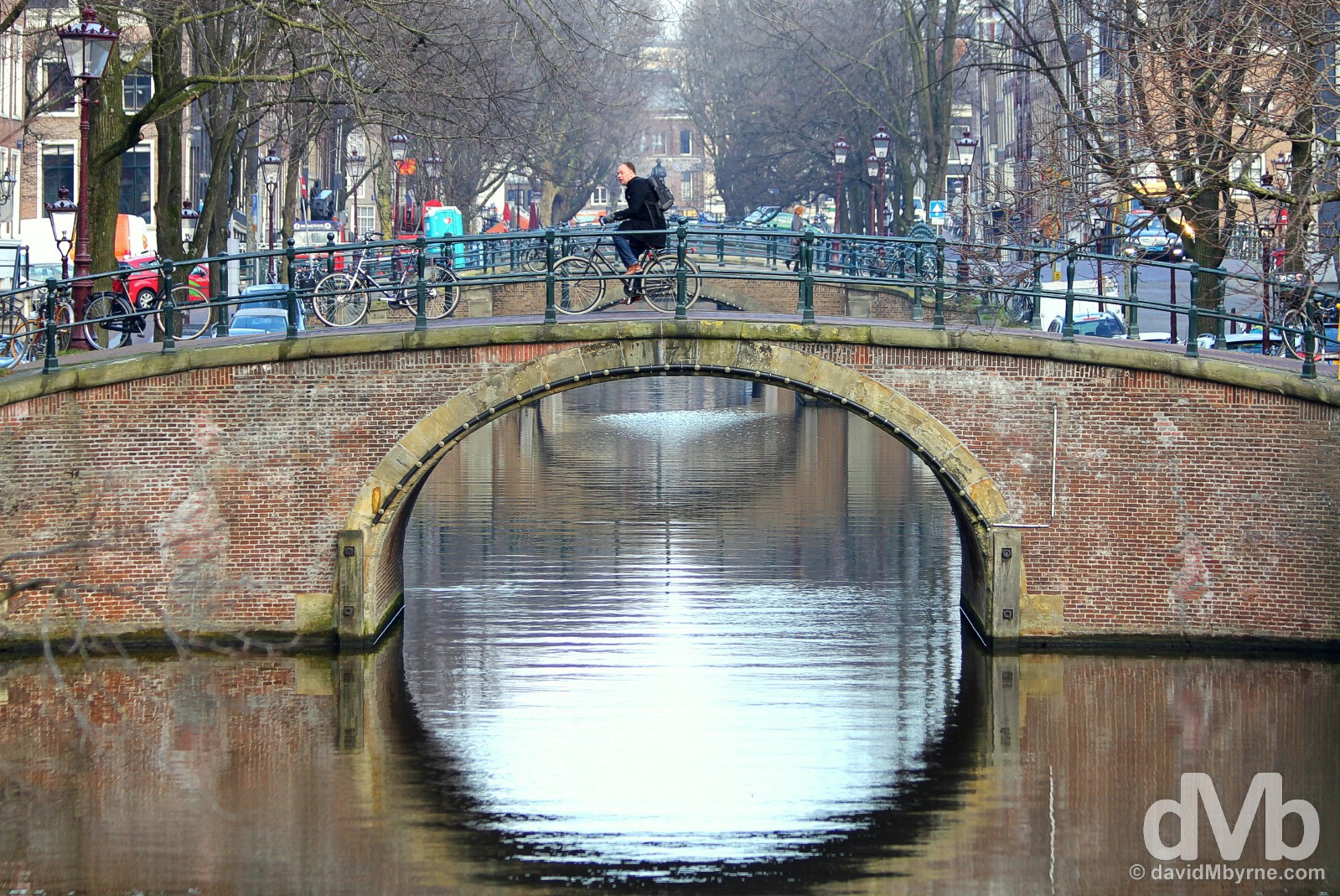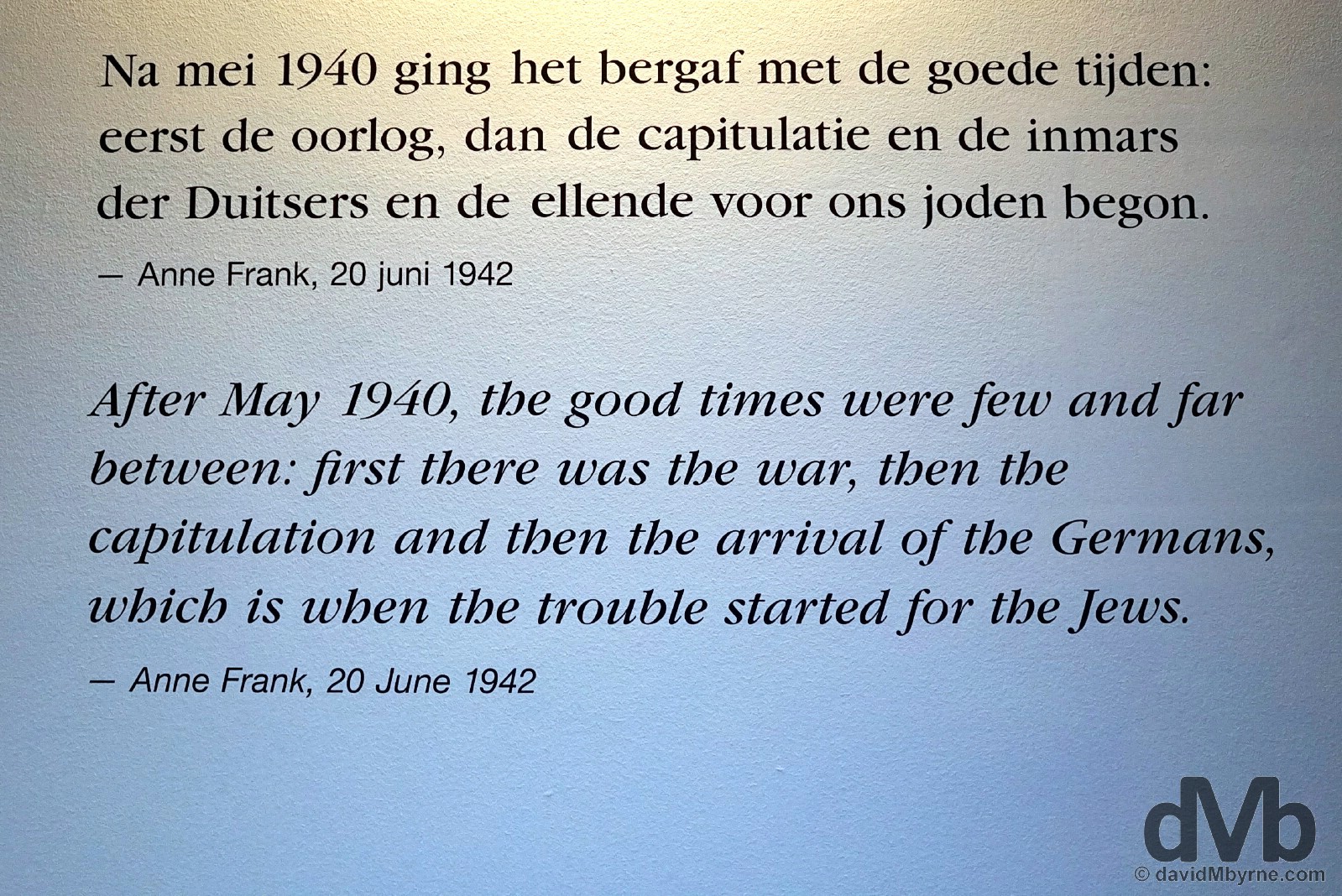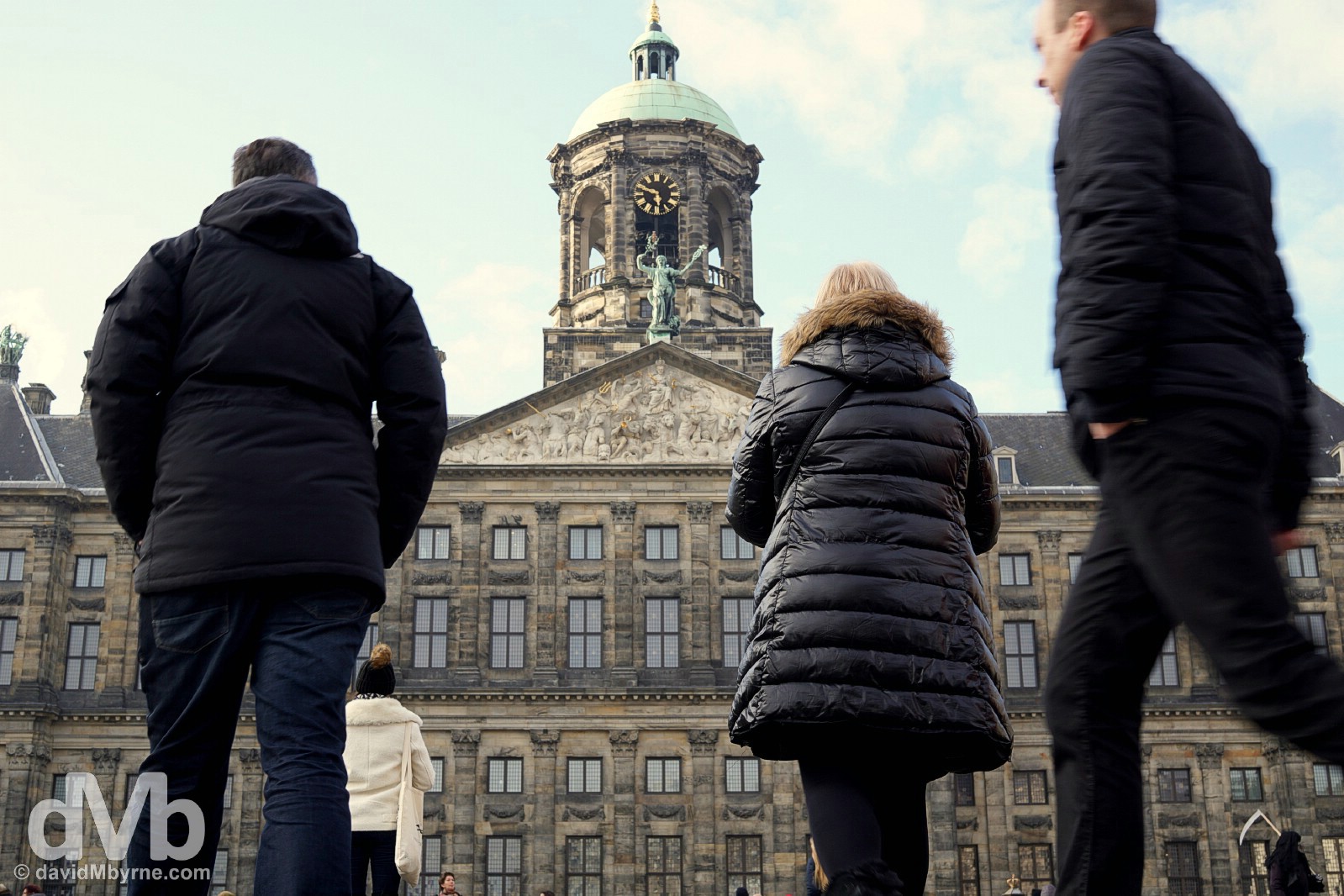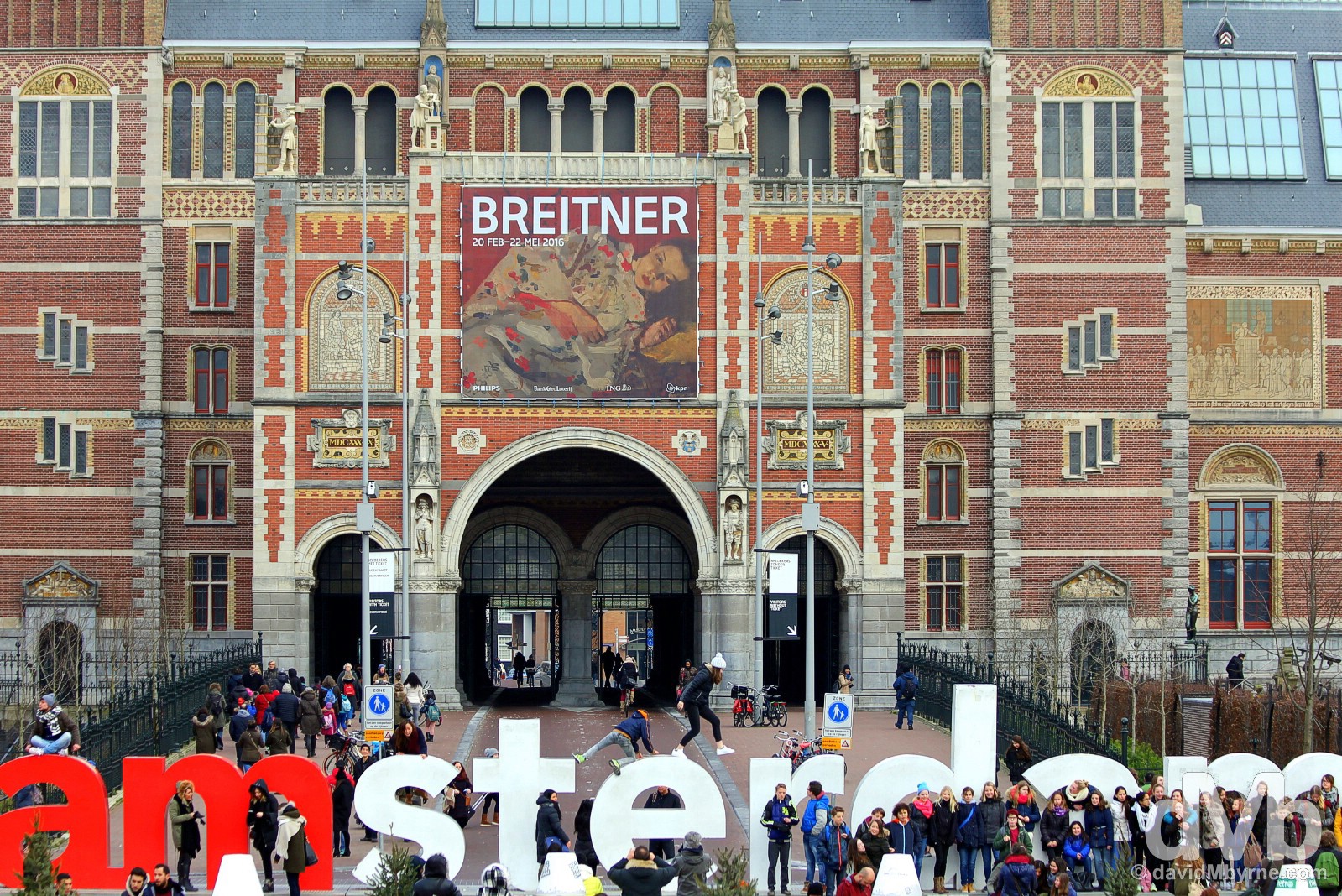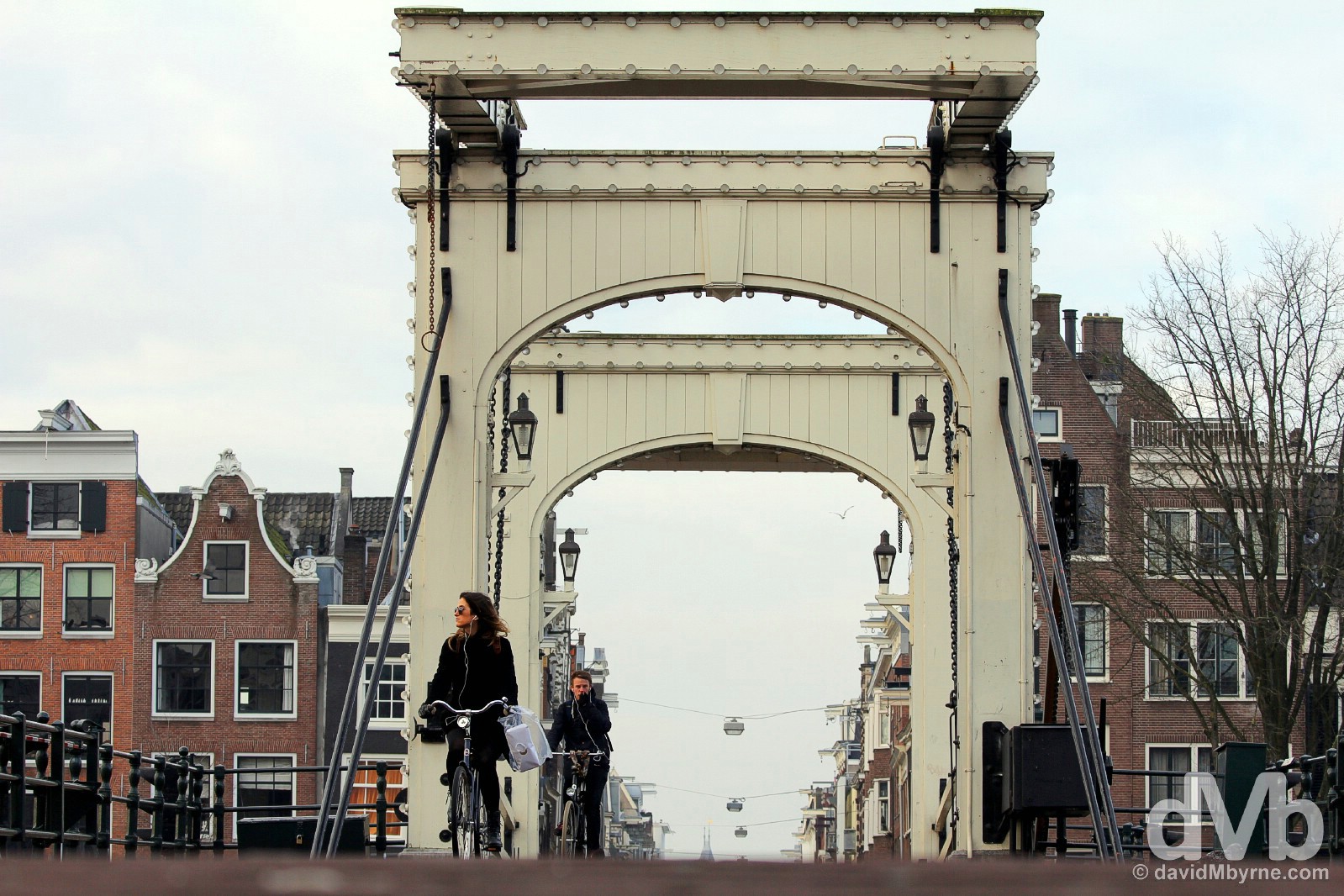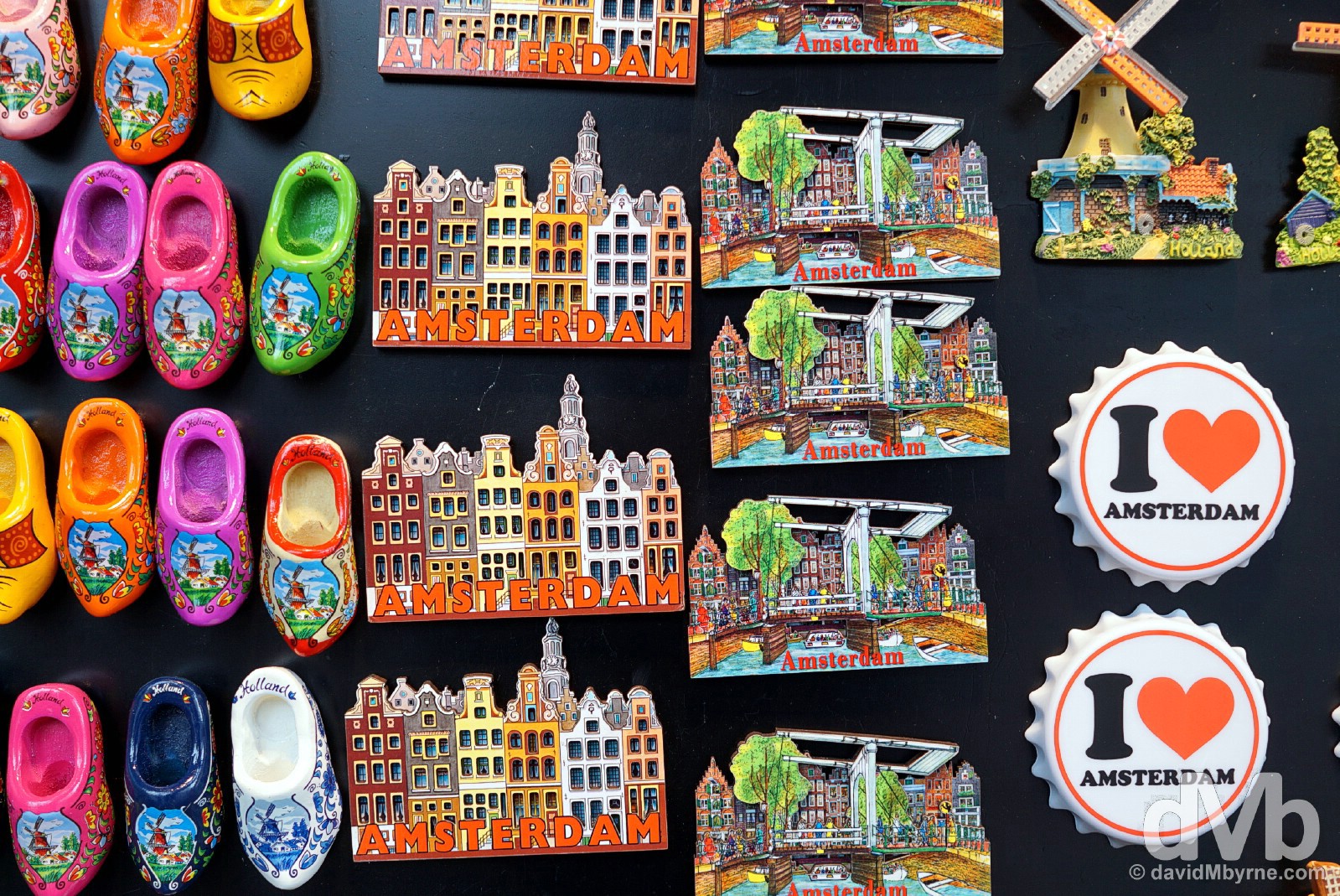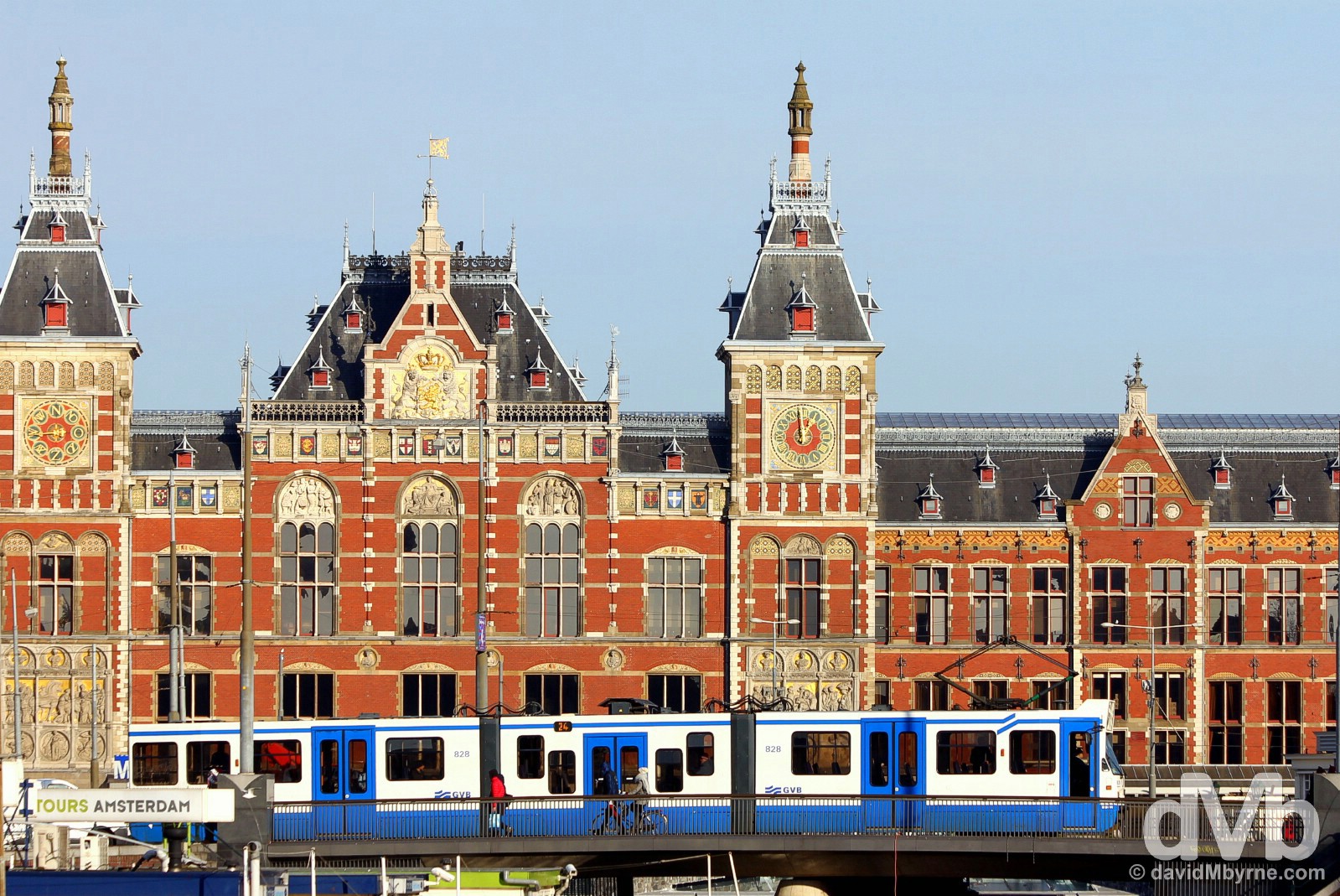Amsterdam
Coffee Shops; Red-lit Hookers; Great Museums; Stunning Architecture; & That Cobweb Of Canals“… known for its liberal attitudes towards sex & drugs – no you don’t have to enter but it’s still a challenge to avoid the adult shops, the street-fronting red-lit hooker rooms & the city’s numerous, notorious & distinctively-smelling coffee shops catering to the freewheeling types the city attracts.”
Image || Canal. Amsterdam, Netherlands. January 19, 2016.
Amsterdam, Netherlands
OK so the Dutch capital is known for its liberal attitudes towards sex & drugs – no you don’t have to enter but it’s still a challenge to avoid the adult shops, the street-fronting red-lit hooker rooms & the city’s numerous, notorious & distinctively-smelling coffee shops catering to the freewheeling types the city attracts. Those aspects of Amsterdam get all the attention but the so-called Venice of the North also boasts great museums, stunning architecture and of course that UNESCO-listed cobweb of canals.
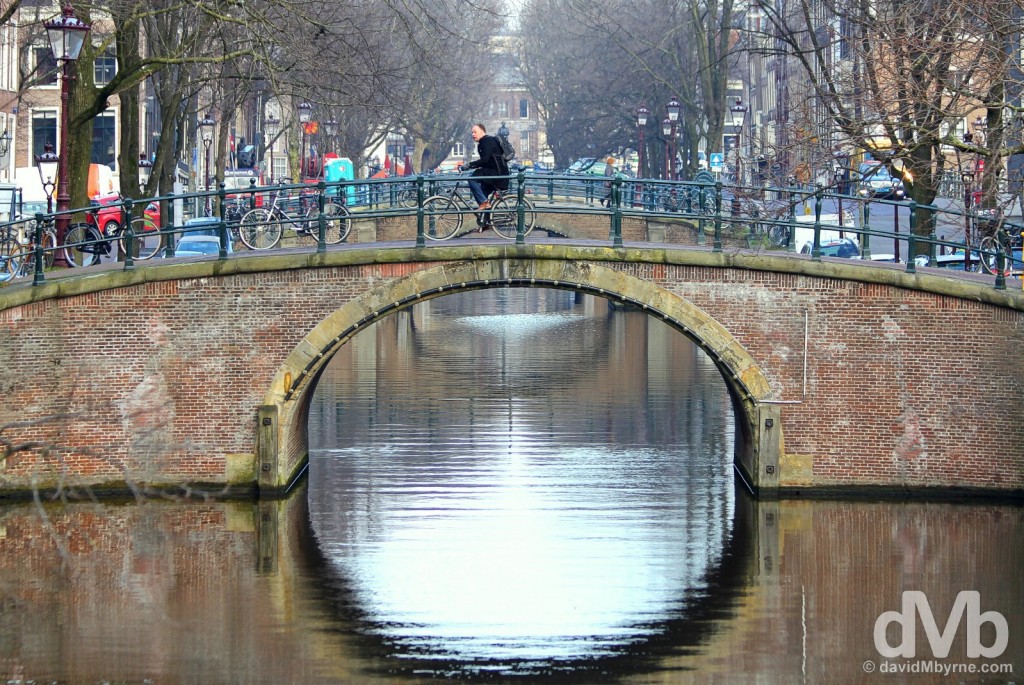
Crossing the canal, on a bicycle of course, in Amsterdam, Netherlands. January 19, 2016.
– UNESCO commenting on Seventeenth-Century Canal Ring Area of Amsterdam inside the Singelgracht.
Anne Frank Huis (House)
The first thing I did on this my third visit to Amsterdam, but first since 2003, after arriving this afternoon off the train from Delft was to pay a visit to the Anne Frank Huis (House), the place where the 13-year-old German Jew and her family famously hid from Nazi Germany for over two years before being betrayed & ultimately dying – save for the father, Otto – in Nazi Concentration Camps.
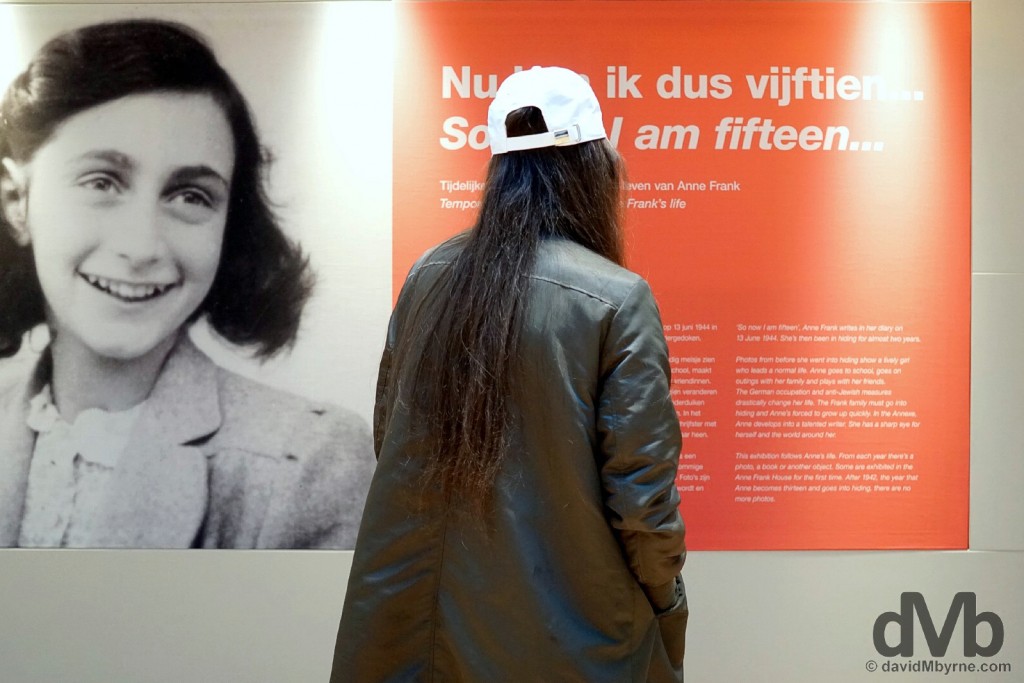
Anne Frank Huis (House) Museum, Amsterdam, Netherlands. January 18, 2016.
At its simplest, what played out here was a high-stakes story of hide & seek, one that produced a very famous & widely published (into 70 languages) diary. The present-day museum, somewhere I visited over a quarter of a century ago on my first visit to Amsterdam meaning I’ve no relocation of that early 90’s visit, does a fabulous job at not only telling the Frank story but also of the plight of the European Jews under Nazi Germany.
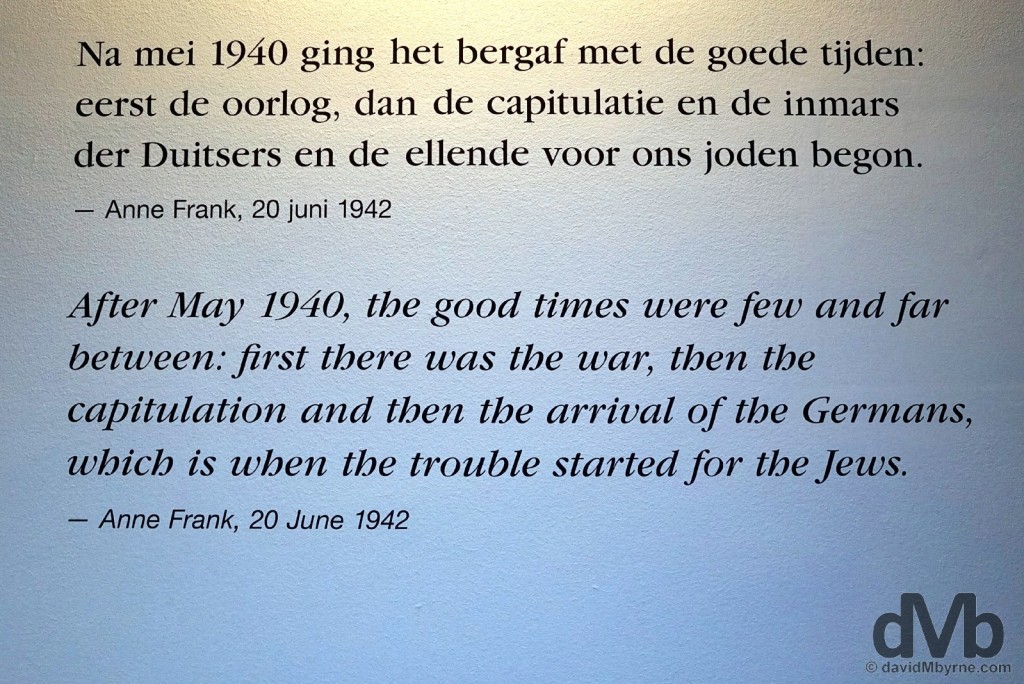
Anne Frank Huis (House) Museum, Amsterdam, Netherlands. January 18, 2016.
Right, I need a breather after that. I’m off to explore the Red Light District. Just looking though folks, just looking.
Red Light District
– The Rough Guide to Netherlands
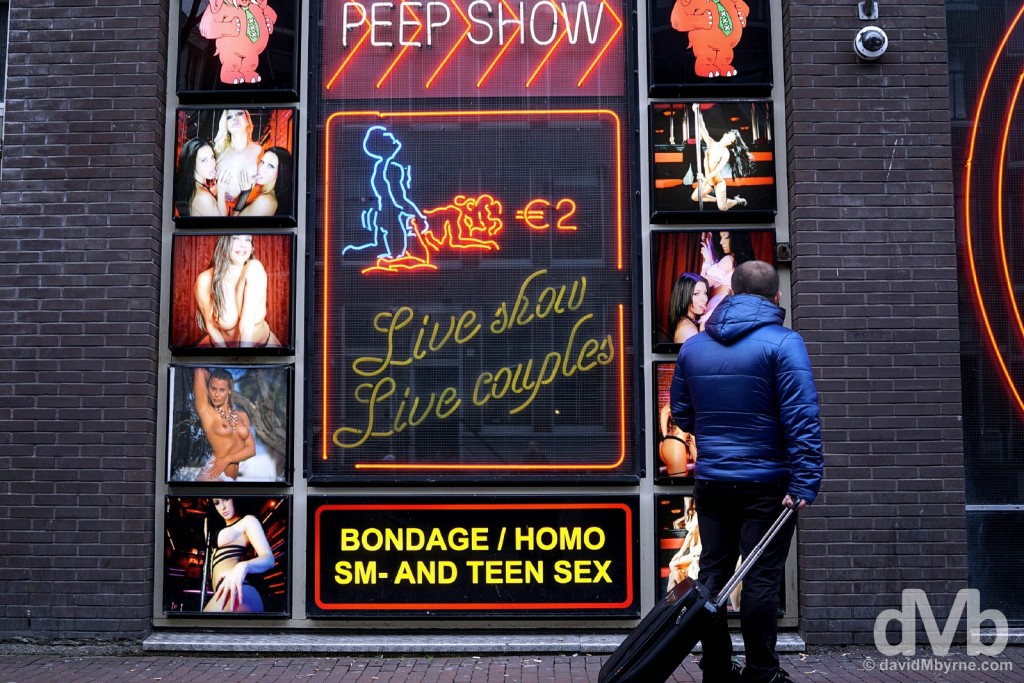
Peep Show. The Red Light District, Amsterdam, Netherlands. January 19, 2016.
Dam Square & Damrak
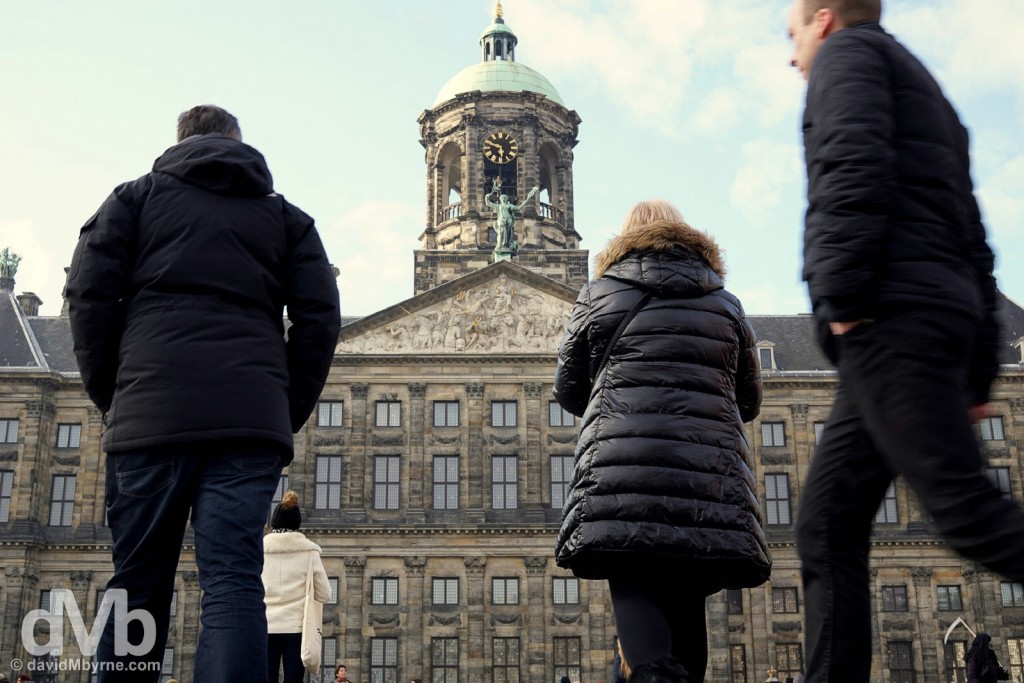
Dam Square, Amsterdam, Netherlands. January 19, 2016.
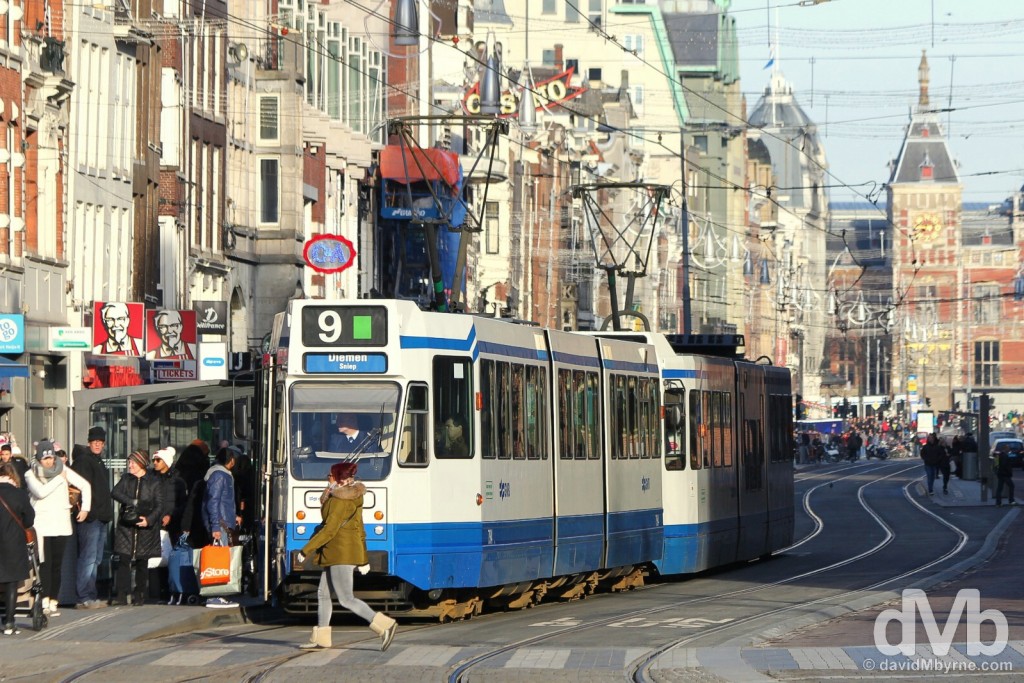
Damrak, Amsterdam, Netherlands. January 18, 2016.
Magere Brug
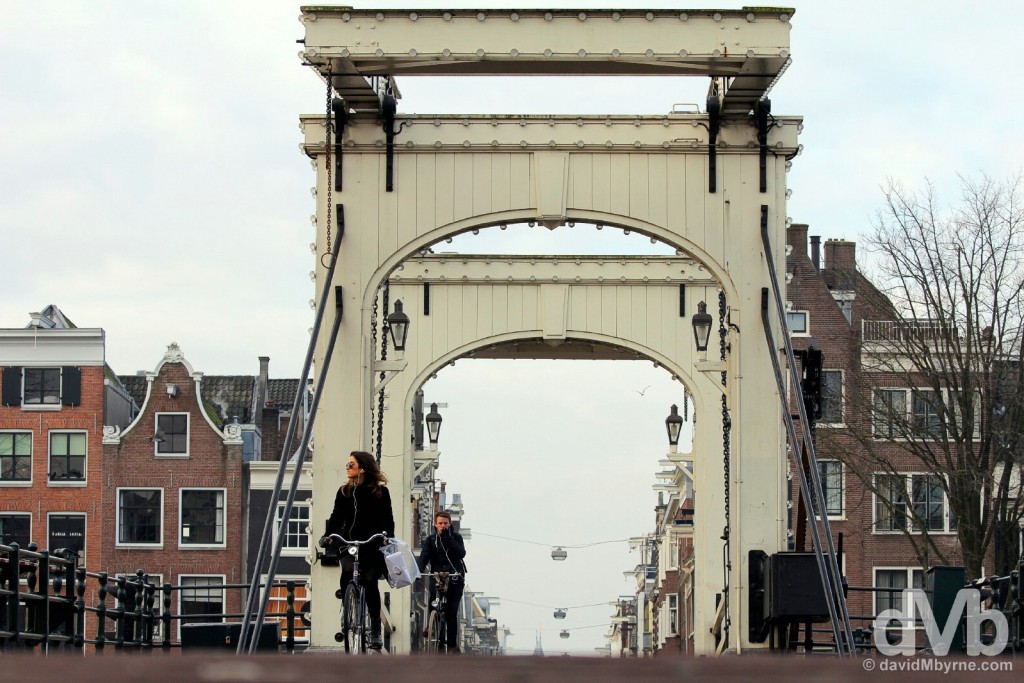
Crossing Magere Brug in Amsterdam, Netherlands. January 19, 2016.
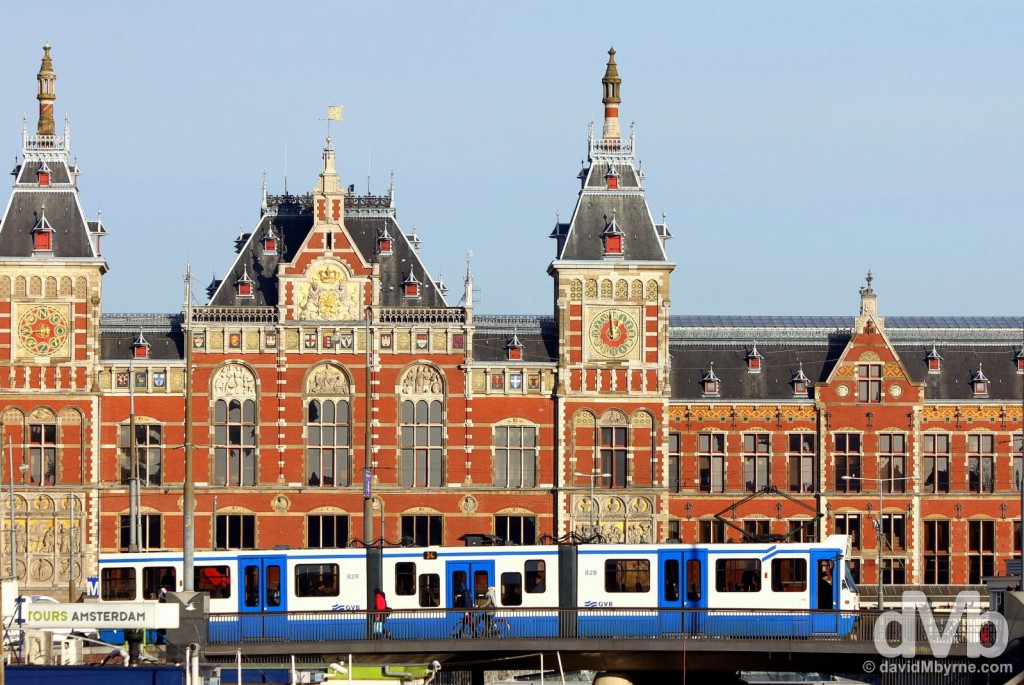
Trams fronting Centraal Station in Amsterdam, Netherlands. January 18, 2016.
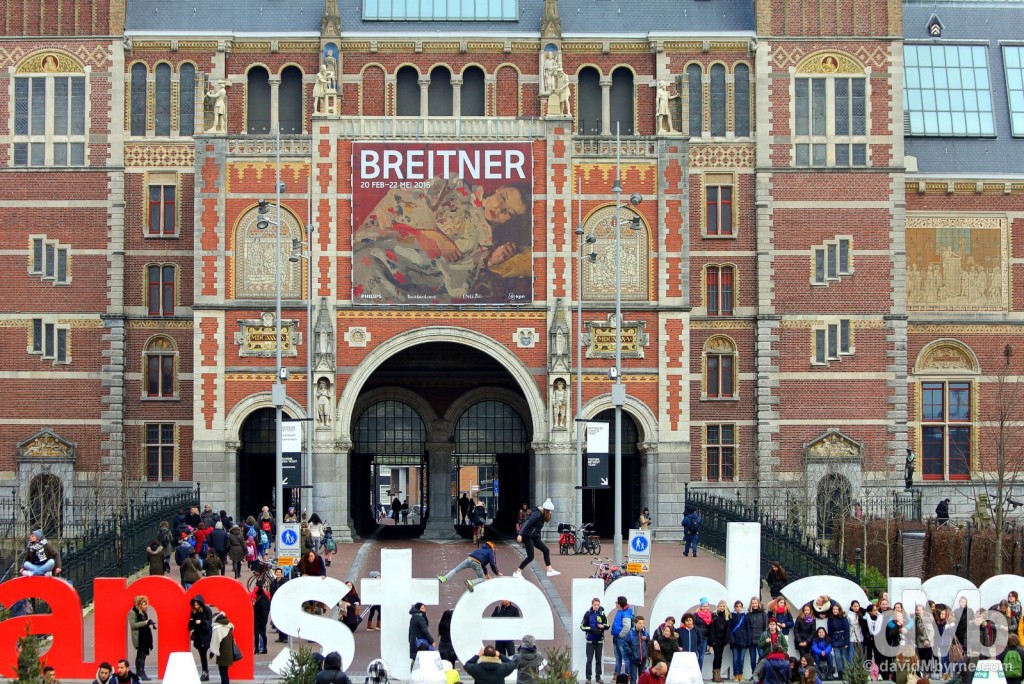
The I Amsterdam letters fronting Rijksmuseum in Amsterdam, Netherlands. January 19, 2016.
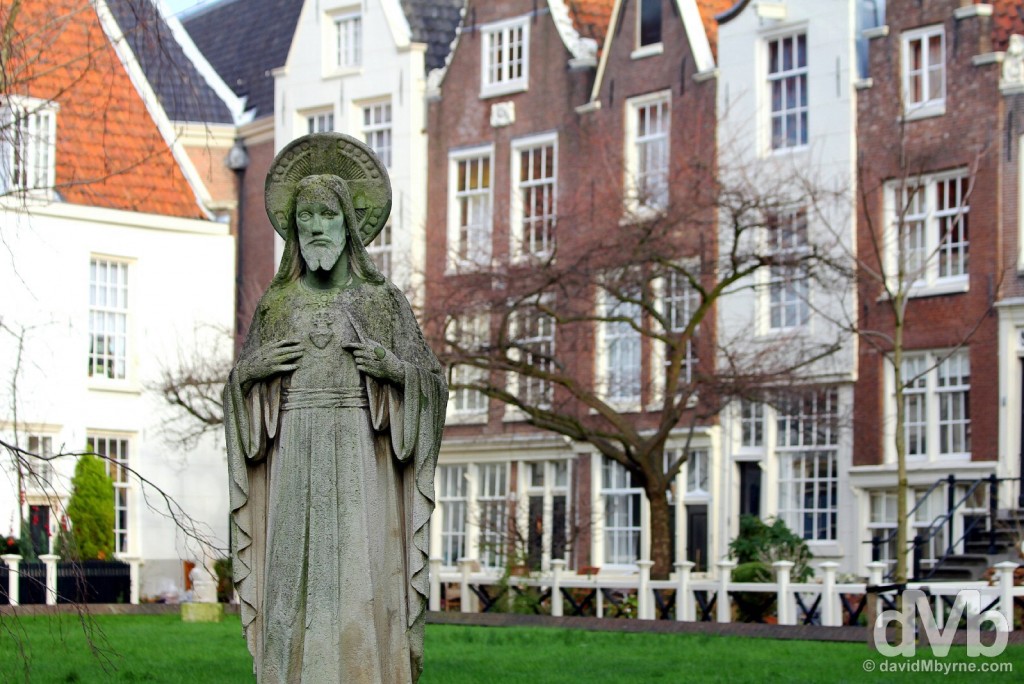
Begijnhof, Amsterdam, Netherlands. January 19, 2016.
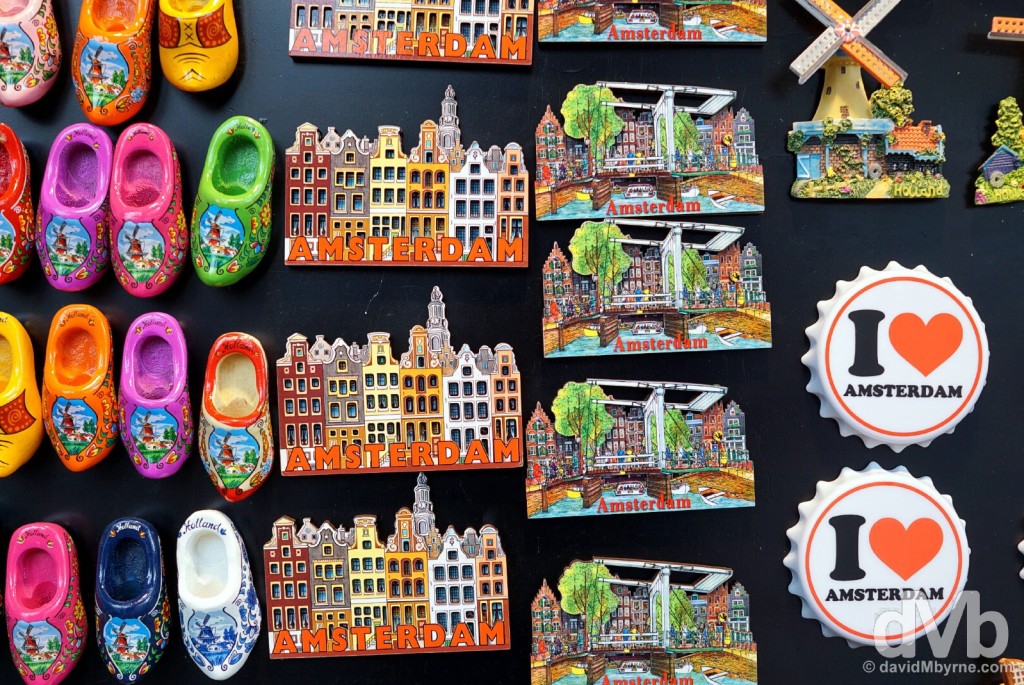
Tourist tat. Amsterdam, Netherlands. January 19, 2016.
Zaanse Schans
I’m ticking the Dutch stereotype boxes. So far I’ve photographed Edam cheese, (ceramic & plastic) tulips, clogs, numerous canals, countless bicycles, some hash paraphernalia, & the odd red-tinged hooker (honest, & I wasn’t arrested). The only Dutch stereotype missing was the windmill. So today I headed out of the capital to Zaanse Schans, an area of working windmills on the Zaan River north of Amsterdam.
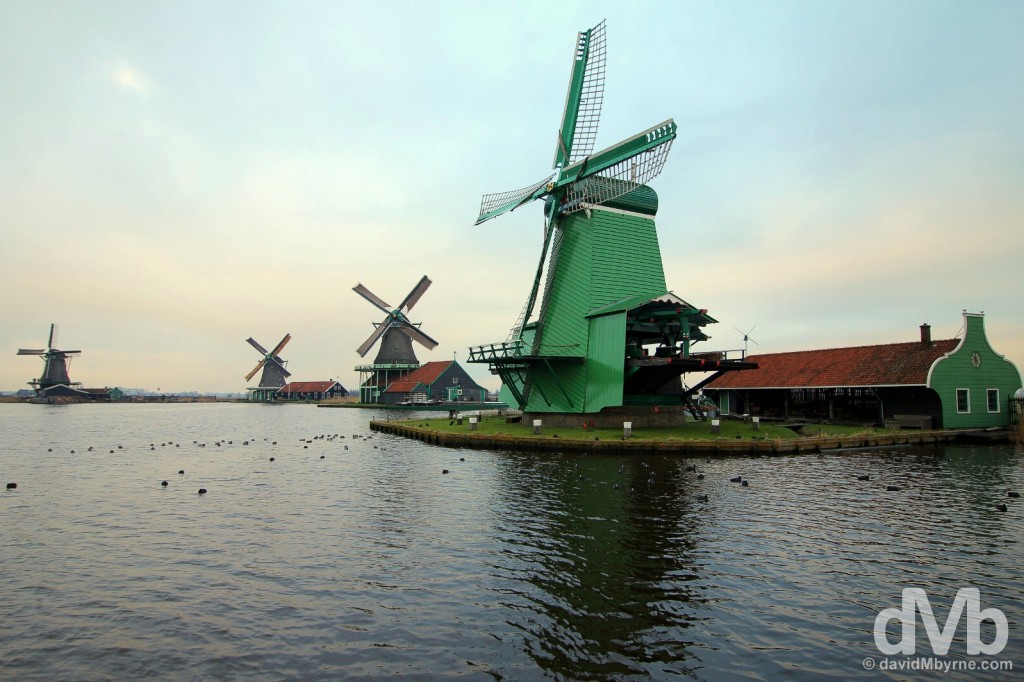
Windmills at Zaanse Schans, Netherlands. January 19, 2016 || Windmills were doing their thing – sawing timber, hulling grain & producing oil, paint, paper, tobacco & mustard – here at Zaanse Schans from as early as the mid 1600’s making this, right here, the world’s very first modern industrial area. There were 900 or so twirling towers back then lining the some 11 kilometres of river bank but today only 6 remain. The site is a bit kitsch, an idyllically-presented tourist-orientated windmill Disneyland, but at least it got me out of the city.
I’m done with Amsterdam (& the Netherlands) & tomorrow I’ll be riding the European rails again en route to Bremen, Germany. The girl in the train ticket office this evening was very nice, somehow bagging me an €84 ticket for €37; I didn’t ask any questions. I think she liked my accent. The Dutch seem to like me. They are a notoriously tolerant bunch and tolerate many kinds I know, but still. Anyway, I’ll be back in Germany tomorrow, my favourite country in Europe.


